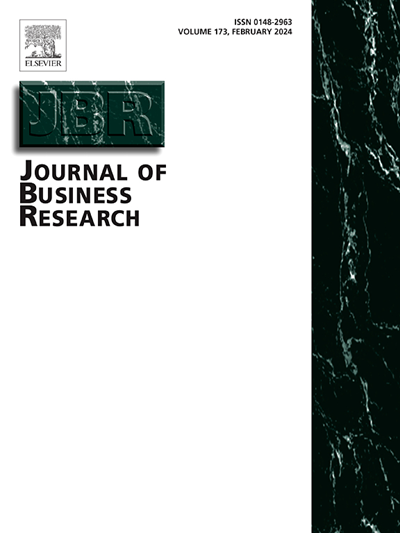The upside of uncertainty: how counterfeit risk in secondary markets influences primary luxury sales
IF 9.8
1区 管理学
Q1 BUSINESS
引用次数: 0
Abstract
The rise of digital resale platforms has reshaped the global luxury goods market, creating opportunities for pre-owned luxury transactions while introducing significant authenticity challenges. We argue that increased uncertainty about product authenticity in the secondhand market can benefit primary market sales. Drawing on concepts from information asymmetry and cross-market spillovers, we propose a novel inverted U-shaped relationship between counterfeit-related uncertainty and primary market demand. Two experimental studies tested this hypothesis by measuring participants’ intention to purchase from the primary market, the secondary market, or opting out altogether. The findings reveal that moderate authenticity uncertainty in the secondhand market drives consumers toward the primary market, where authenticity is guaranteed. However, as perceived uncertainty reaches extreme levels, consumers either exit the market or revert to secondhand purchases despite known risks. This cross-market mechanism, where secondary market uncertainty influences primary market sales, challenges traditional views that counterfeits only damage brands through direct competition. This study contributes to theory by (1) extending Akerlof’s information asymmetry framework to cross-market contexts, (2) identifying conceptual boundary conditions where uncertainty creates value rather than destroys it, and (3) challenging the prevailing assumption that counterfeits are categorically harmful to luxury brands. These insights further suggest that luxury brands might benefit from balancing their anti-counterfeiting efforts: reducing uncertainty enough to prevent trust erosion while maintaining some ambiguity to redirect demand toward primary channels.
不确定性的好处:二级市场的假货风险如何影响一级奢侈品销售
数字转售平台的兴起重塑了全球奢侈品市场,为二手奢侈品交易创造了机会,同时也带来了重大的真实性挑战。我们认为,二手市场对产品真实性的不确定性增加可以有利于一级市场的销售。利用信息不对称和跨市场溢出的概念,我们提出了与假冒相关的不确定性与初级市场需求之间的倒u型关系。两项实验研究通过测量参与者从一级市场、二级市场购买或完全不购买的意愿来验证这一假设。研究发现,二手市场的真实性不确定性适度,促使消费者倾向于真实性有保障的一级市场。然而,当感知到的不确定性达到极端水平时,消费者要么退出市场,要么不顾已知的风险重新购买二手商品。二级市场的不确定性影响一级市场的销售,这种跨市场机制挑战了传统观点,即假冒产品只会通过直接竞争损害品牌。本研究通过以下几个方面对理论做出了贡献:(1)将Akerlof的信息不对称框架扩展到跨市场环境;(2)确定了不确定性创造价值而不是破坏价值的概念边界条件;(3)挑战了假货对奢侈品牌绝对有害的普遍假设。这些见解进一步表明,奢侈品牌可能会从平衡他们的反假冒努力中受益:减少不确定性以防止信任侵蚀,同时保持一些模糊性以将需求转向主要渠道。
本文章由计算机程序翻译,如有差异,请以英文原文为准。
求助全文
约1分钟内获得全文
求助全文
来源期刊

Journal of Business Research
BUSINESS-
CiteScore
20.30
自引率
10.60%
发文量
956
期刊介绍:
The Journal of Business Research aims to publish research that is rigorous, relevant, and potentially impactful. It examines a wide variety of business decision contexts, processes, and activities, developing insights that are meaningful for theory, practice, and/or society at large. The research is intended to generate meaningful debates in academia and practice, that are thought provoking and have the potential to make a difference to conceptual thinking and/or practice. The Journal is published for a broad range of stakeholders, including scholars, researchers, executives, and policy makers. It aids the application of its research to practical situations and theoretical findings to the reality of the business world as well as to society. The Journal is abstracted and indexed in several databases, including Social Sciences Citation Index, ANBAR, Current Contents, Management Contents, Management Literature in Brief, PsycINFO, Information Service, RePEc, Academic Journal Guide, ABI/Inform, INSPEC, etc.
 求助内容:
求助内容: 应助结果提醒方式:
应助结果提醒方式:


